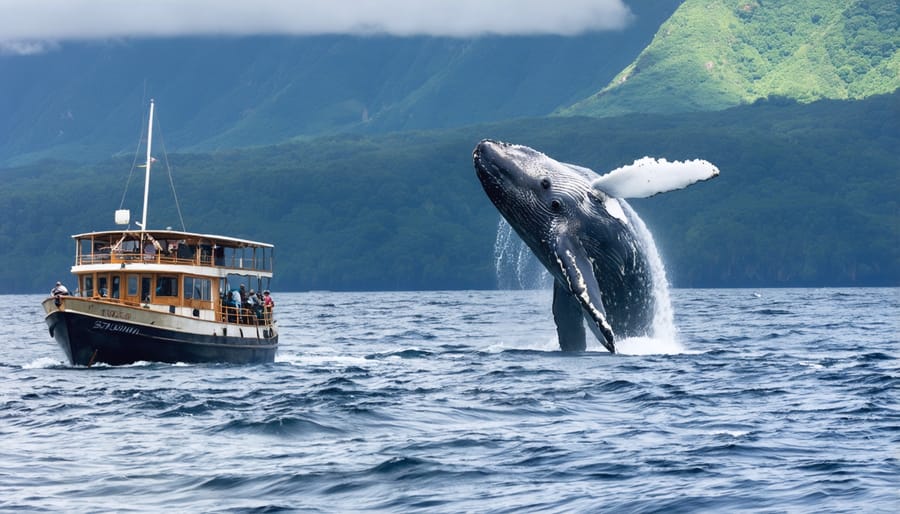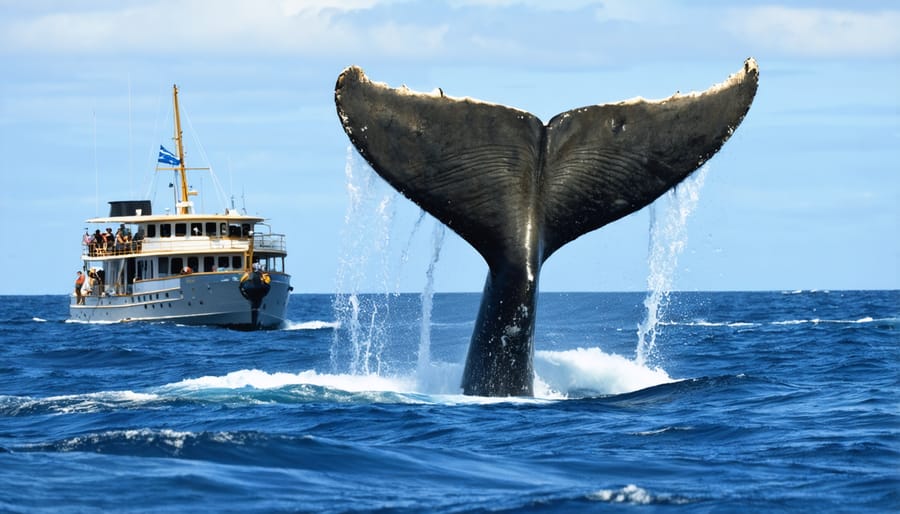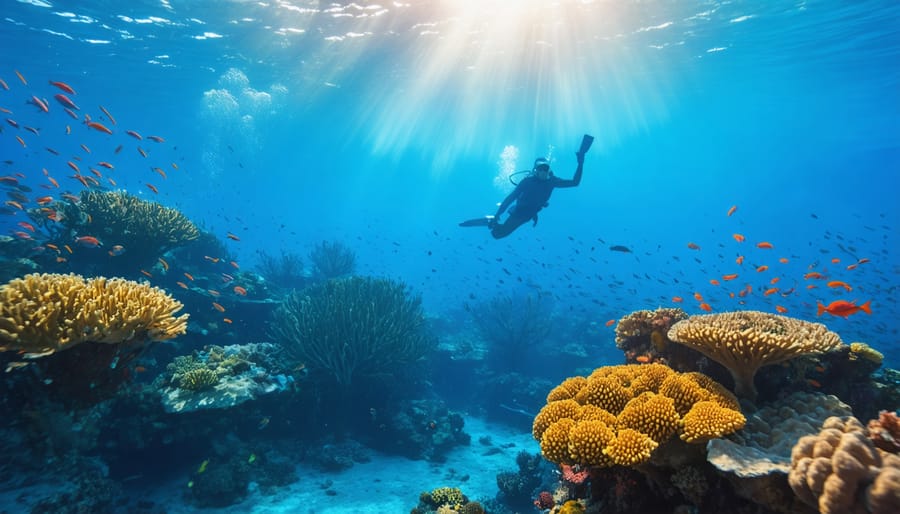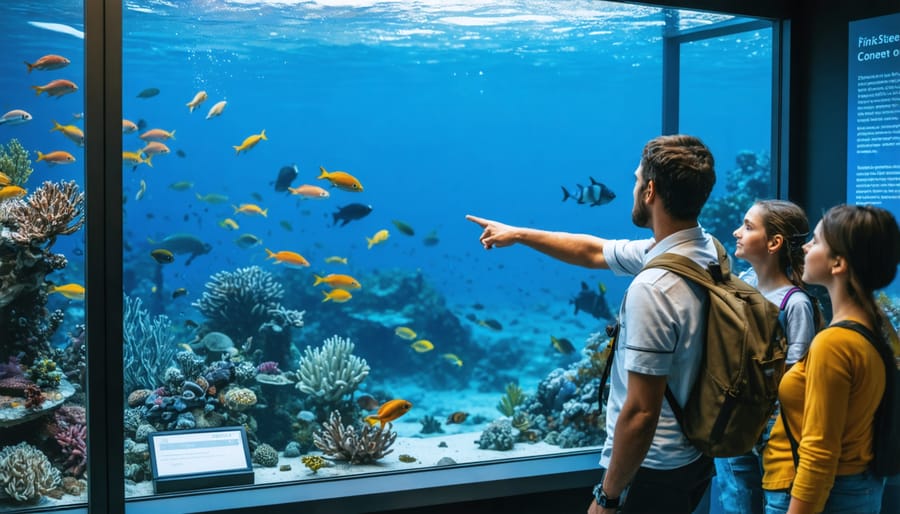
Costa Rica stands as a global pioneer in ecotourism, where conservation meets adventure in a perfect synthesis of environmental responsibility and unforgettable experiences. This Central American paradise has transformed the traditional tourism model by creating a framework where visitors actively participate in protecting its extraordinary biodiversity – from misty cloud forests to pristine beaches where potential risks of marine ecotourism are carefully managed through strict guidelines and certification programs.
Authentic Costa Rican ecotourism involves direct community engagement, with local guides sharing generations of knowledge while ensuring tourism revenues benefit conservation efforts and indigenous communities. Visitors can explore over 30 national parks, participate in reforestation projects, or assist in sea turtle conservation – all while adhering to strict environmental protocols that preserve these delicate ecosystems for future generations.
This isn’t just about observing nature; it’s about participating in its preservation. Whether staying in eco-lodges powered by renewable energy, supporting local organic farmers, or engaging in citizen science projects, travelers become active participants in Costa Rica’s remarkable commitment to environmental stewardship and sustainable development.
Understanding Marine Ecotourism in Costa Rica
Key Marine Ecosystems and Wildlife
Costa Rica’s marine ecosystems are a testament to the country’s incredible biodiversity, hosting over 6,700 species of marine life across two distinct coastlines. The Pacific coast features dramatic rocky reefs and mangrove forests, while the Caribbean side boasts pristine coral reefs and seagrass beds.
Notable marine destinations include the Marino Ballena National Park, famous for its seasonal whale watching opportunities where visitors can observe humpback whales during their annual migration. The Tortuguero National Park serves as a crucial nesting site for endangered green sea turtles, while the Caño Island Biological Reserve offers world-class snorkeling and diving experiences among vibrant coral gardens.
The Gulf of Papagayo hosts diverse marine life, including spotted dolphins, manta rays, and various shark species. The Golfo Dulce, one of only four tropical fjords worldwide, provides a unique habitat for marine mammals and serves as a vital nursery for hammerhead sharks.
These ecosystems not only support marine biodiversity but also provide sustainable livelihoods through responsible ecotourism, demonstrating how conservation and economic development can work in harmony.
Certified Ecotourism Operations
Costa Rica has established rigorous certification standards to ensure ecotourism operators maintain high environmental and social responsibility levels. The Certification for Sustainable Tourism (CST) program, developed by the Costa Rican Tourism Board, evaluates businesses on a five-level scale based on their environmental practices, community engagement, and cultural preservation efforts.
To identify legitimate operators, look for the CST certification level displayed on their website or marketing materials. The higher the level (represented by leaves), the more sustainable their practices. Additionally, reputable operators should be members of recognized organizations like the National Chamber of Ecotourism (CANAECO) or the Rainforest Alliance.
Certified operators typically demonstrate commitment through documented waste management programs, energy conservation initiatives, and local community support. They employ trained naturalist guides, maintain small group sizes, and follow strict wildlife viewing guidelines.
Before booking, ask operators about their specific sustainability practices, community involvement, and conservation projects. Legitimate companies will readily share this information and often provide detailed sustainability reports or impact assessments.
Ethical Guidelines for Marine Wildlife Encounters
Whale and Dolphin Watching Protocol
Costa Rica’s commitment to ethical ocean conservation practices is exemplified in its comprehensive whale and dolphin watching protocols. These guidelines ensure both the safety of marine mammals and the quality of visitor experiences while minimizing environmental impact.
Tour operators must maintain a minimum distance of 100 meters from whales and dolphins, approaching slowly from a parallel position to avoid startling the animals. When multiple boats are present, a maximum of two vessels may observe a pod at any given time, with strict 30-minute viewing limits per group.
Engines must be placed in neutral when within 300 meters of cetaceans, and any sudden changes in speed or direction are prohibited. This reduces underwater noise pollution, which can disrupt the animals’ natural behaviors and communication patterns.
During breeding season (July to October), additional restrictions apply to protect mother-calf pairs. Boats must maintain greater distances and reduce observation times to 15 minutes. Tour guides are required to provide educational briefings about marine conservation and local species before each excursion.
Professional operators will display current permits and follow the national “Bandera Azul” (Blue Flag) certification program, which ensures adherence to environmental standards. Visitors are encouraged to choose companies that employ trained naturalist guides and actively contribute to local marine research initiatives.
These protocols not only protect marine life but also enhance the viewing experience by allowing animals to behave naturally. When followed correctly, these guidelines create sustainable wildlife encounters that benefit both conservation efforts and eco-tourism development.

Reef and Sea Turtle Interaction Rules
Costa Rica’s marine ecosystems are delicate environments that require careful interaction. When visiting coral reefs, maintain a minimum distance of 3 meters from the reef structure to prevent accidental contact and damage. Never touch, stand on, or collect pieces of coral, as even minor contact can harm these slow-growing organisms that take years to recover.
For snorkeling and diving activities, use reef-safe sunscreen products that don’t contain harmful chemicals like oxybenzone and octinoxate. These chemicals can bleach coral and disrupt marine ecosystems. Apply sunscreen at least 30 minutes before entering the water to allow proper absorption into your skin.
When encountering sea turtles, whether during nesting or swimming, maintain a respectful distance of at least 5 meters. Never touch or chase these ancient creatures, and avoid using flash photography, which can disorient them. During nesting season, use red-filtered lights if necessary, as these are less disruptive to turtles’ natural behavior.
Many beaches in Costa Rica host organized turtle watching tours led by certified guides. These experiences typically occur at night when turtles come ashore to nest. Follow your guide’s instructions carefully, remain quiet, and stay with your group. If you encounter a nesting turtle, wait until she begins laying eggs before approaching, as they are most sensitive during their initial beach approach.
For underwater encounters, never attempt to feed sea turtles or other marine life. This can alter their natural feeding patterns and make them dependent on human interaction. Remember that you’re a guest in their habitat, and your role is to observe and appreciate these magnificent creatures while ensuring their behaviors remain undisturbed.

Environmental Impact and Conservation Efforts
Economic Benefits for Local Communities
Ecotourism has become a powerful economic engine for Costa Rica’s coastal communities, creating sustainable livelihoods while preserving natural resources. Local families who once relied on fishing or agriculture have successfully transitioned to operating eco-lodges, leading nature tours, or working as certified guides, generating steady income while protecting their environment.
In regions like the Osa Peninsula and Tortuguero, ecotourism enterprises employ local residents as naturalist guides, hospitality staff, and conservation technicians. These jobs typically offer higher wages than traditional occupations and provide opportunities for professional development through guide certification programs and language training.
The multiplier effect of ecotourism extends beyond direct employment. Local restaurants serve farm-to-table meals, artisans sell handcrafted souvenirs, and family-owned businesses provide transportation services. Many communities have established cooperatives to manage tourism activities, ensuring profits remain within the region and support community development projects.
Statistics show that eco-lodges and sustainable tourism activities generate up to 95% of income in some coastal villages. This economic boost has funded infrastructure improvements, educational programs, and healthcare facilities. Additionally, communities have invested tourism revenues in conservation initiatives, creating a virtuous cycle where environmental protection drives economic growth.
The success of community-based ecotourism has inspired neighboring regions to adopt similar models, demonstrating how responsible tourism can create prosperity while preserving Costa Rica’s natural heritage for future generations.

Conservation Success Stories
Costa Rica’s commitment to ecotourism has yielded remarkable conservation successes, particularly in marine ecosystems. The Ostional Wildlife Refuge presents a compelling example, where community-based tourism has helped protect olive ridley sea turtles while providing sustainable income for local residents. Through carefully managed tourist visits and educational programs, nesting populations have increased by 40% since the program’s inception.
Another success story comes from the Golfo Dulce, where sustainable marine management practices have led to the recovery of whale shark populations. Local tour operators, working alongside marine biologists, have established strict guidelines for whale watching, resulting in more frequent whale shark sightings and improved breeding patterns.
The Cabo Blanco Absolute Nature Reserve demonstrates how ecotourism can drive marine conservation. Since implementing regulated snorkeling programs and marine education initiatives, coral reef health has improved significantly, with a 30% increase in fish species diversity. Local fishermen-turned-tour guides now earn more through ecological tours than traditional fishing, creating a sustainable economic model that benefits both the community and marine ecosystem.
These success stories showcase how well-managed ecotourism can create positive feedback loops, where conservation efforts enhance tourist experiences, generating more support for environmental protection while providing sustainable livelihoods for local communities.
Choosing Responsible Tour Operators
Questions to Ask Before Booking
Before booking your ecotourism experience in Costa Rica, it’s essential to thoroughly evaluate tour operators to ensure they align with marine conservation ethics and sustainable practices. Start by asking about their environmental policies and conservation initiatives. How do they minimize their impact on local ecosystems? What percentage of their profits goes back into conservation efforts?
Inquire about their guide certification and expertise. Are their guides locally trained and knowledgeable about Costa Rica’s marine ecosystems? What is the maximum group size for tours? Smaller groups typically have less environmental impact and provide better learning experiences.
Ask about their relationships with local communities. Do they employ local staff? How do they contribute to the local economy? Authentic ecotourism should benefit both the environment and local populations.
Consider their specific practices: Do they maintain safe distances from wildlife? What are their waste management protocols? How do they handle emergency situations while protecting natural resources?
Request information about their permits and certifications. Legitimate operators should hold proper licenses and ideally be certified by recognized ecotourism organizations. Look for memberships in organizations like the Global Sustainable Tourism Council or Costa Rica’s Certification for Sustainable Tourism program.
Finally, ask about their educational components. True ecotourism should include meaningful learning opportunities about local ecosystems and conservation efforts, not just sightseeing.
Red Flags to Watch For
While Costa Rica is renowned for its commitment to sustainable tourism, it’s essential to stay vigilant and recognize potential warning signs of greenwashing or unsustainable practices. Watch out for tour operators who can’t provide specific details about their conservation efforts or environmental policies. Be wary of companies that advertise “eco-friendly” services but use single-use plastics or fail to properly manage waste.
Another red flag is overcrowded tours that exceed recommended capacity limits, particularly in sensitive areas like coral reefs or nesting sites. Legitimate ecotour operators typically maintain small group sizes to minimize environmental impact. Be cautious of operators who allow or encourage wildlife feeding or handling, as these practices can harm animals and disrupt natural behaviors.
Pay attention to transportation methods – if a company claims to be eco-friendly but exclusively uses large, inefficient vehicles without any attempt to offset their carbon footprint, this may indicate superficial commitment to sustainability. Look out for accommodations that advertise themselves as eco-lodges but lack basic environmental practices like water conservation, renewable energy use, or proper waste management.
Be skeptical of extremely low prices, as genuine ecotourism operations often have higher operating costs due to sustainable practices and fair labor compensation. If a tour operator can’t or won’t discuss their relationships with local communities or their contribution to conservation efforts, this might indicate a lack of authentic commitment to ecotourism principles.
Costa Rica’s ecotourism sector represents a delicate balance between environmental conservation and sustainable economic development. Through responsible practices and community engagement, this vibrant industry has become a model for sustainable tourism worldwide. By choosing certified eco-lodges, working with local guides, and participating in conservation activities, visitors can contribute meaningfully to Costa Rica’s environmental preservation efforts.
The success of Costa Rica’s marine ecotourism, in particular, demonstrates how tourism can actively support conservation goals. From sea turtle nesting sites to coral reef preservation programs, tourists have become integral partners in protecting these fragile ecosystems. However, this success depends entirely on continued commitment to responsible practices from both operators and visitors.
As you plan your eco-adventure in Costa Rica, remember that every choice matters. Select tour operators who prioritize environmental protection, respect wildlife viewing guidelines, and contribute to local communities. Consider volunteering with marine conservation projects or participating in citizen science initiatives during your stay. These experiences not only enrich your journey but also support crucial research and preservation efforts.
The future of Costa Rica’s remarkable biodiversity lies in our collective commitment to responsible tourism. By making informed choices and embracing the principles of ecotourism, we can ensure these natural treasures remain pristine for generations to come. Your visit to Costa Rica can be more than just a vacation – it can be part of a larger movement toward sustainable travel and environmental conservation.
jessica
Ava Singh is an environmental writer and marine sustainability advocate with a deep commitment to protecting the world's oceans and coastal communities. With a background in environmental policy and a passion for storytelling, Ava brings complex topics to life through clear, engaging content that educates and empowers readers. At the Marine Biodiversity & Sustainability Learning Center, Ava focuses on sharing impactful stories about community engagement, policy innovations, and conservation strategies. Her writing bridges the gap between science and the public, encouraging people to take part in preserving marine biodiversity. When she’s not writing, Ava collaborates with local initiatives to promote eco-conscious living and sustainable development, ensuring her work makes a difference both on the page and in the real world.
